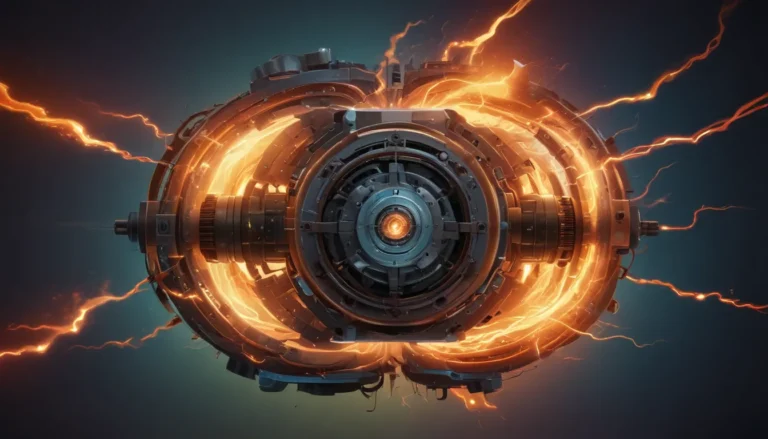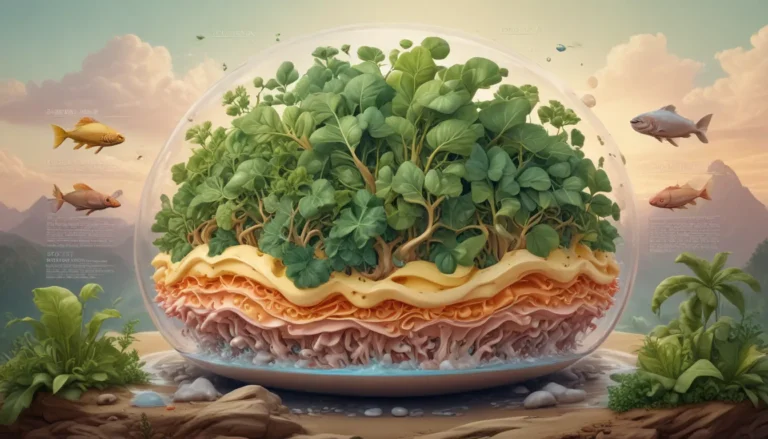A Note About Images: The images used in our articles are for illustration purposes only and may not exactly match the content. They are meant to engage readers, but the text should be relied upon for accurate information.
Chemical reactions are the essence of the captivating world of chemistry, driving transformations from simple combustion to complex biological processes. These reactions impact everything from the food we consume to the medications we rely on. In this article, we will delve into the enchanting realm of reactions and unveil 16 fascinating facts that will leave you in awe. Whether you are an aspiring chemist or simply curious about the magic of chemistry, these facts will offer you a glimpse into the extraordinary changes that take place at the molecular level. So, brace yourself to discover some extraordinary insights about reactions!
Understanding the Crucial Role of Reactions in Chemistry
Reactions serve as the cornerstone of chemistry, facilitating the conversion of substances into new forms through the rearrangement of atoms and the breaking and forming of chemical bonds. Without reactions, life as we know it would cease to exist, impacting processes ranging from food digestion to drug synthesis. These transformations are vital for advancing scientific knowledge and enhancing our daily lives.
Unveiling the Diversity of Reaction Types
Chemistry boasts a myriad of reaction types, each with its own distinctive characteristics and outcomes. From oxidation-reduction reactions to acid-base reactions and precipitation reactions, understanding these variations is essential for predicting chemical behaviors and devising efficient synthesis pathways. By familiarizing ourselves with these types, we unlock the potential to manipulate reactions for our benefit.
Mastering the Art of Chemical Equations
Chemical equations serve as vehicles for representing reactions in a quantitative manner, detailing the reactants and products involved in a clear and concise format. Achieving balance in chemical equations is a crucial skill, ensuring that the law of conservation of mass is upheld. These equations offer valuable insights into the stoichiometry of reactions, guiding chemists in their quest for precision and efficiency.
Embracing the Concept of Reaction Rates
The rate of a reaction denotes the speed at which reactants are consumed and products are generated. Variables such as temperature, concentration, and catalyst presence exert significant influence on reaction rates, enabling scientists to optimize reaction conditions for maximal efficiency. By studying reaction rates, chemists illuminate the pathways to enhancing reaction outcomes.
Unraveling the Mysteries of Enthalpy and Entropy
Entalpy and entropy emerge as pivotal thermodynamic properties, dictating whether a reaction occurs spontaneously. While enthalpy signifies the heat exchange within a reaction, entropy mirrors the disorder or randomness of a system. The interplay between these factors categorizes reactions as exothermic or endothermic, shedding light on the energy dynamics at play.
Navigating the Realm of Activation Energy
Activation energy stands as the threshold energy requisite for a reaction to initiate, serving as a barrier that must be surmounted for reactants to evolve into products. Catalysts, in their role of lowering activation energy, facilitate reactions without undergoing consumption, streamlining reaction processes for optimal efficiency. This phenomenon underscores the significance of catalysts in accelerating chemical transformations.
Embracing Equilibrium in Reactions
Equilibrium embodies a state where the forward and reverse reactions within a system occur at an equilibrium rate, denoted by the equilibrium constant (K). Understanding equilibrium empowers chemists to manipulate reaction conditions to favor desired product formation, unveiling a pathway to precise control over chemical transformations.
Investigating the Intricacies of Redox Reactions
Redox reactions feature electron transfers between reactants, where oxidation signifies electron loss and reduction denotes electron gain. These reactions underpin vital biological processes such as cellular respiration and photosynthesis, showcasing their indispensability in sustaining life’s fundamental processes.
Delving into the World of Reaction Stoichiometry
Stoichiometry articulates the quantitative relationships between reactants and products in a reaction, enabling chemists to ascertain the molar ratios of substances involved and calculate the yield of products from specified quantities of reactants. This concept ushers in precision and efficiency, guiding chemists in their quest for accurate chemical transformations.
Harnessing the Power of Catalysis in Chemistry
Catalysis emerges as a transformative process wherein catalysts expedite reactions by offering an alternative pathway with reduced activation energy, thereby enhancing reaction rates. These catalysts remain unaltered post-reaction, enabling their reuse and revolutionizing industrial processes for heightened efficiency and diminished energy consumption.
Exploring the Dynamics of Chemical Kinetics
Chemical kinetics serves as the domain within chemistry devoted to studying reaction rates, encompassing rate measurements, rate law determinations, and factors influencing reaction rates. This field yields invaluable insights into reaction mechanisms, fostering optimal reaction condition optimization and enhancing chemical transformation efficiency.
Unraveling the Collision Theory Behind Reactions
The collision theory posits that for a reaction to transpire, reactant molecules must collide with adequate energy and alignment. This theory elucidates the impact of temperature and concentration on reaction rates, furnishing a foundational understanding of reaction mechanisms and guiding chemists in unraveling the mysteries of chemical transformations.
Discerning the Nuances of Endothermic and Exothermic Reactions
Endothermic reactions absorb heat from their surroundings, leading to temperature decline, while exothermic reactions release heat, culminating in temperature rise. These energy changes adhere to the law of conservation of energy, showcasing the dynamic interplay between reactions and energy transformation.
Unveiling the Profound Impact of Catalysts on Reactions
Catalysts occupy a pivotal role in reactions by presenting an alternative pathway with decreased activation energy, amplifying reaction rates while remaining unaltered post-reaction. Widely employed in industrial processes, catalysts epitomize innovation and efficiency, revolutionizing chemical transformations and enhancing sustainability.
Illuminating the Concept of Reaction Mechanisms
Reaction mechanisms elucidate the sequential elementary reactions forming a chemical reaction, empowering chemists to forecast and regulate reaction outcomes for enhanced synthesis processes. These mechanisms advance precision and selectivity in chemical transformations, elevating the efficiency and efficacy of reactions.
Bridging the Divide Between Chemistry and Everyday Life
Beyond laboratory confines, reactions weave an intricate web within our daily lives, manifesting in activities as commonplace as food preparation and fuel combustion. Understanding and optimizing these processes for efficiency, safety, and sustainability illuminates the profound impact reactions have on our quotidian experiences.
Conclusion: A World of Endless Possibilities
In conclusion, reactions emerge as the lifeblood of chemistry, embodying a transformative force that underpins the natural world’s intricacies. From elementary chemical concepts to complex biological phenomena, the study of reactions enables scientists to unlock nature’s mysteries, fostering innovation, and progress. The boundless diversity and complexity of reactions provide a fascinating avenue for exploration, propelling chemistry into an ever-evolving realm of discovery.
Whether you’re a curious individual or an aspiring chemist, grasping the nuances of reactions is pivotal in navigating the enigmatic world around us. So, as you bear witness to chemical transformations, seize the opportunity to revel in the mesmerizing processes unfolding before your eyes.
FAQs
What is a chemical reaction?
A chemical reaction involves the rearrangement of atoms to generate new substances, facilitated by the breaking and forming of chemical bonds within the reactants and products.
What are the various types of reactions?
Reactions span a spectrum of types, including synthesis reactions, decomposition reactions, combustion reactions, single replacement reactions, double replacement reactions, and acid-base reactions, each showcasing distinct characteristics and mechanisms.
Why are reactions pivotal in chemistry?
Reactions serve as the foundation of chemistry, elucidating the transformation of matter and energy dynamics, shaping our understanding of substances and their properties, driving scientific exploration, and fostering innovation.
How can reactions be regulated or expedited?
By manipulating factors such as temperature, pressure, reactant concentration, and catalyst presence, reactions can be steered to desired outcomes, accelerating reaction rates and modifying reaction pathways.
Can reactions occur without visible changes?
Indeed, reactions may transpire without overt visual cues, necessitating precise measurements and analytical methodologies to detect and analyze these molecular transformations that occur beyond the naked eye’s purview.
Embark on a journey of discovery and enlightenment as you uncover the intricacies of reactions, unveiling the mysteries of chemical transformations and their profound impact on our world. Explore the magic of chain reactions, delve into the guiding principles of reaction coordinates, and navigate the uncharted territories of second-order reactions. Expand your horizons, satiate your curiosity, and embrace the boundless possibilities that await as you traverse the enchanting landscape of chemical reactions!






